STANIER’S ‘8FS’
It’s 80 years since the Stanier ‘8Fs’ first appeared – the 8F Society’s Jim Norman takes a closer look at an iconic design.
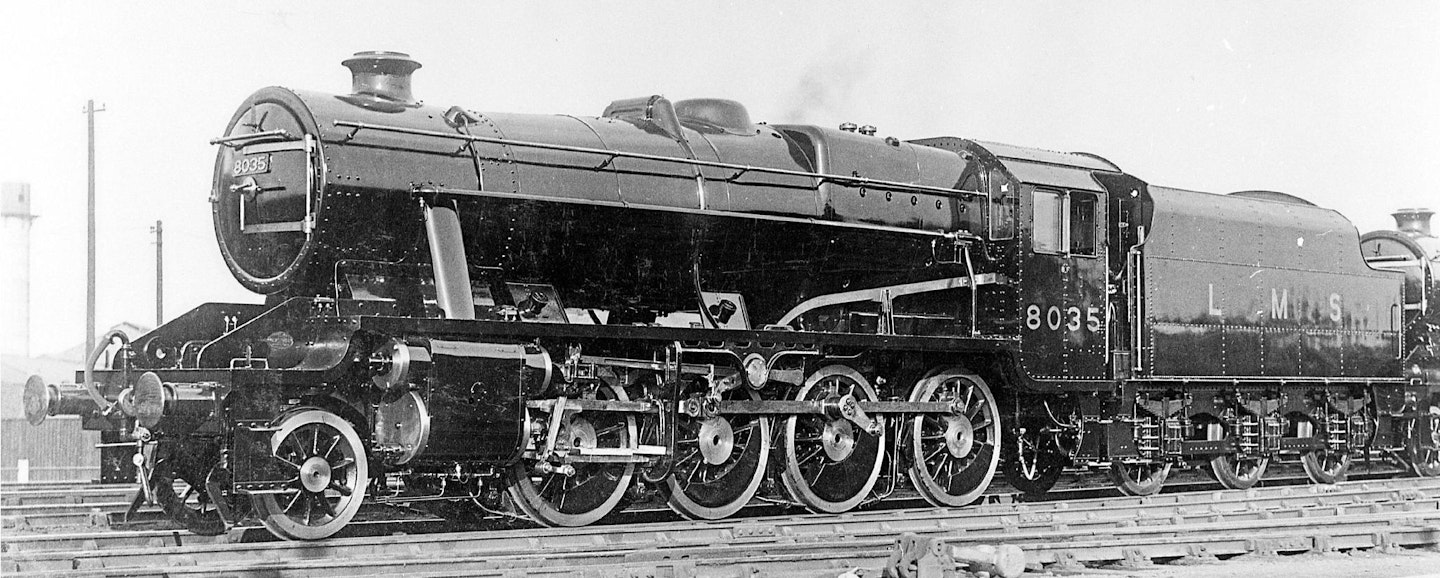
The Stanier heavy freight engine began production in 1935; the pioneer engine was noted on the Engine History Card as built on June 19 1935. But its origins go back far beyond this, and its subsequent building and use were in much greater numbers and to much further locations than Tom Coleman at Crewe Drawing Office ever imagined.
On its formation in January 1923, the LMS inherited many eight-coupled freight engines from the LNWR (553), L&YR (295) and Caledonian Railway (8). The largest goods engines from the Midland Railway were the ‘4F’ 060s. There was, therefore, a shortfall on the Midland Division and, to some extent, north of the border.
The meeting of the Rolling Stock Committee on November 29 1923 to decide the 1923/24 building programme approved 100 280s at an estimated cost of £500,000. J.H. Follows, the Chief General Superintendent, reported to the Traffic Committee:
“... with regard to the 2-8-0 type superheated freight tender engines, that he had asked the CME to supply an engine to meet certain demands, and that, should such an engine not be found practicable, another type would be required to be substituted’. The CME explained to the Rolling Stock Committee that ‘he was endeavouring to design a particular type of engine to meet certain requirements, but he was not yet sure as to what particular type would be required to run over all sections of the Amalgamated Company, and he proposed to report further at the next meeting.” How much work was carried out on this isn’t known, although E. Stewart Cox did some calculations on the bridge curve (checking axle loads) between November 6 and 19 prior to meeting of the replacement Locomotive and Electrical Committee on July 23 1924, where it was reported, “It had not been possible to arrive at a design of engine which could be utilised on all sections of the line. He stated that Mr Follows and himself had agreed that the 100 engines should be Midland No. 4 class 0-6-0 freight engines, in view of the urgency of the Chief General Superintendent’s requirements.”
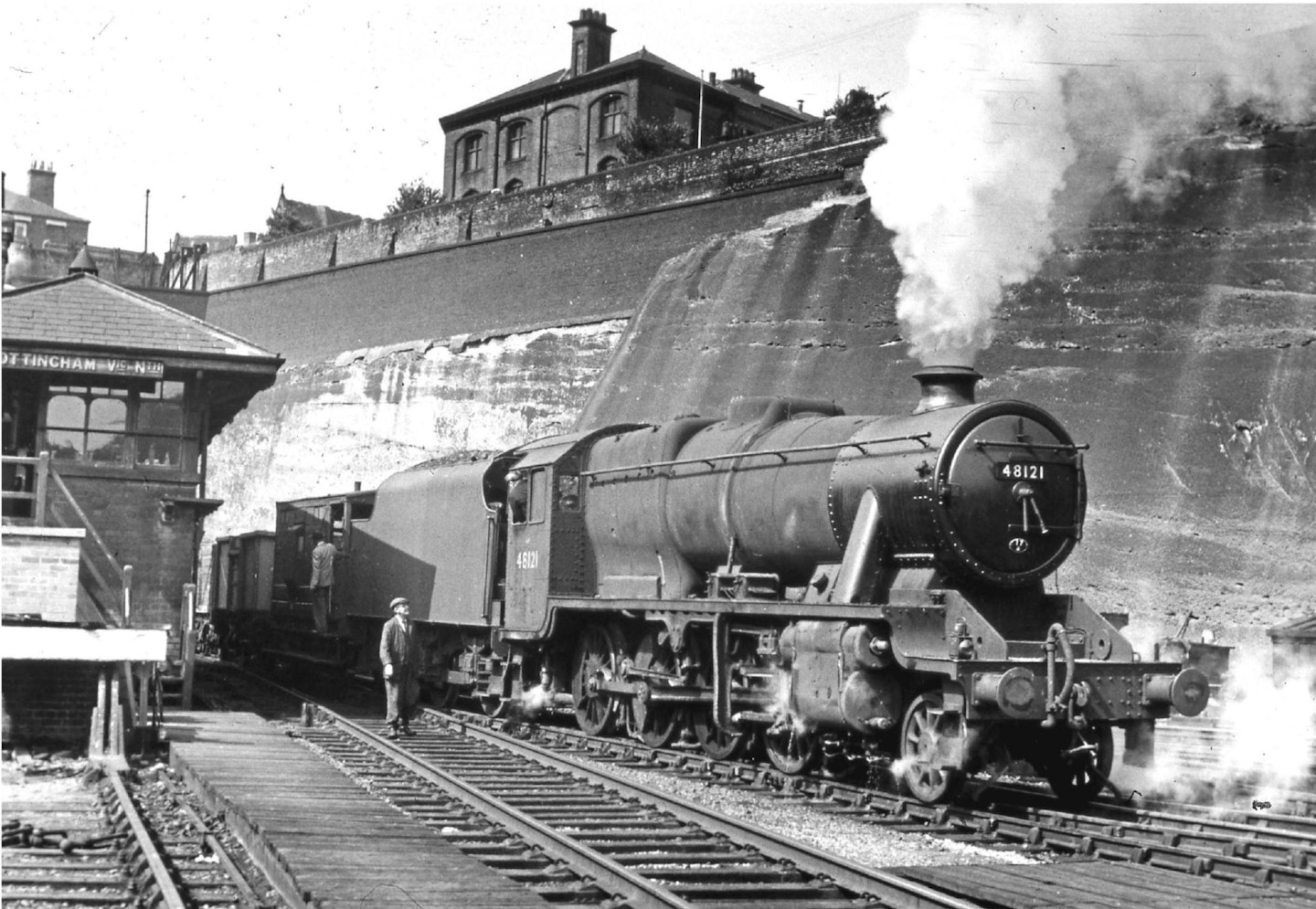
In 1927 or 1928, the matter of a heavy goods and mineral engine for the Midland Division arose and it was intended to develop the Derby-designed S&DJR ‘7F’ 2-8-0 for the purpose. To justify the choice, trials were arranged against an ex LNWR ‘G2’ 0-8-0 between Toton and Brent. These, however, demonstrated the superiority of the ‘G2’, so an 0-8-0 design based on it (its boiler anyway, but little else) was prepared and 100 were approved at the committee’s meeting on December 20 1928, entering traffic in April the following year. They were strong and free steaming, but their mechanical integrity was very poor and ultimately led to their early withdrawal. In the brief reign of Herbert Lemon as CME (1931), both H.P.M. Beames (then Deputy CME) and S.J. Symes (Personal Assistant to the CME) each put in separate proposals for a 2-8-0, but neither went anywhere. Since by this time William Stanier had been appointed CME and had his own ideas on locomotive development, this is hardly surprising. The meeting of September 19 1931 to decide the 1932 building programme had approved a further 20 ‘Austin 7s’, as the 0 8 0s were known, but this was later reduced to 15, the other five to be built as 2-8-0s in the 1933 programme.
Stanier was at the committee meetings of July 27 1932 and presented a review of the 1932 programme. He also offered the proposals for the 1933 programme, which was the first one to include locomotives of his own design. Of the standard class ‘7F’ 0-8-0s, it was reported, “From experience which has been gained with engines of this type in traffic, it was considered that material advantages in reliability and haulage capacity would be obtained by introducing as a standard a locomotive of the 2-8-0 type instead of the present 0-8-0. With this object in view only 15 of the 20 0-8-0 engines in the 1932 programme were to be built, and the remaining five should be built as 2-8-0 engines and included in the 1933 programme.” Also in this programme were ten ‘Converted Prince of Wales’ type, which would eventually metamorphose into ‘Black Fives’, but these and the five 2 8 0s were cancelled in favour of an additional 15 ‘Rebuilt Claughtons’, or ‘Patriots’ to the enthusiast.
The 2-8-0s next appeared in the meeting of June 28 1933, which approved the building programme for 1934 and included two ‘experimental’ 2-8-0s, although what was experimental about them wasn’t stated, and these did see the light of day as ‘8Fs’ Nos. 8000/01. The 1935 building programme was authorised on June 17 1934 and included 10 ‘7F’ (as they are originally designated) 2-8-0s. Delays with the ‘experimental’ engines meant that they arrived on June 19 and June 28 1935 respectively, almost immediately followed by No. 8002 on July 9. After over 12 years of vacillation and delay, the need for a modern and versatile heavy goods engine had finally been answered.
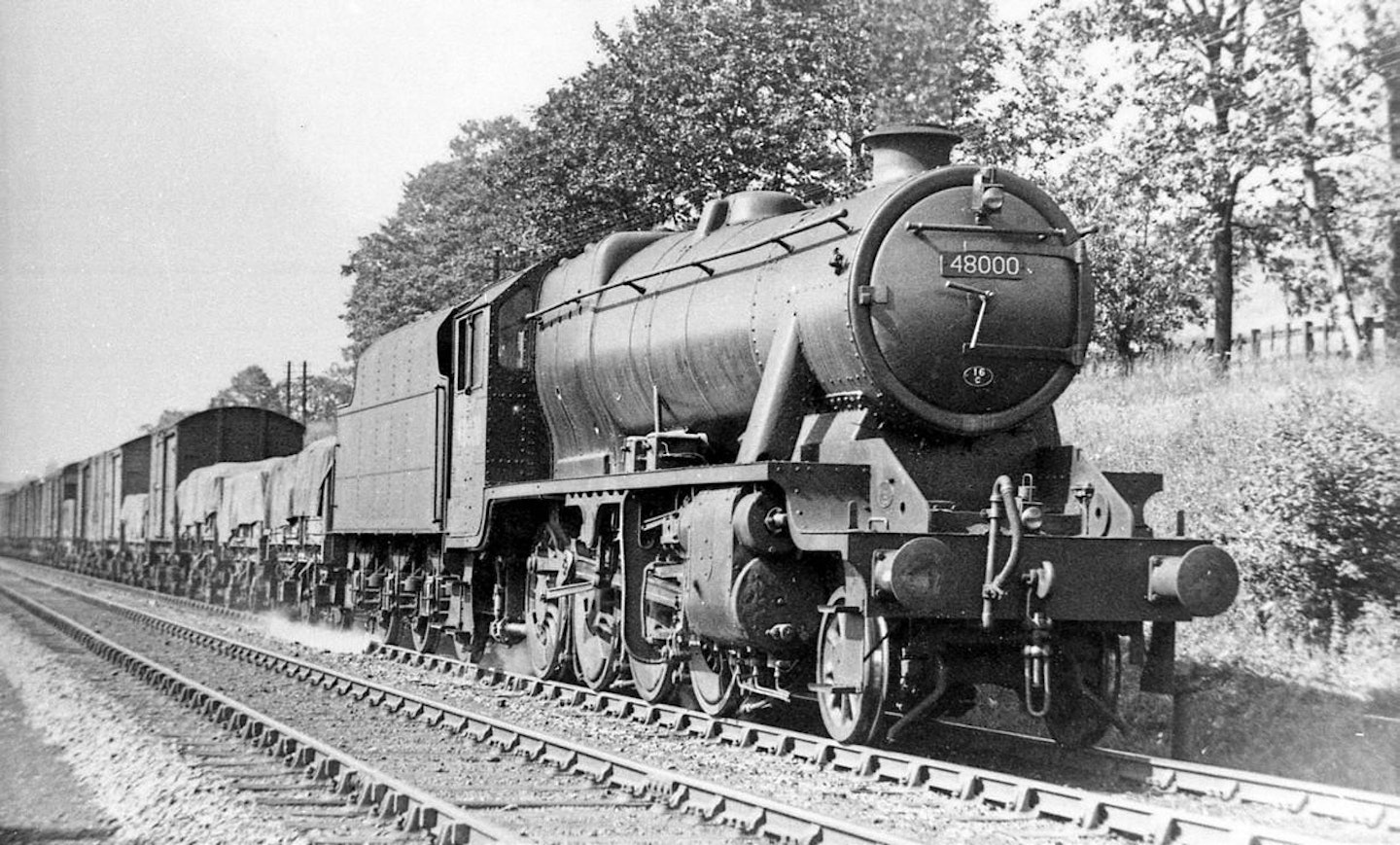
Design and construction
At the time of that meeting in June 1934, the first of the ‘Black Fives’, No. 5020, was less than two months away from entering traffic on August 2 1934. As with previous proposals for ‘Pacifics’ and 2-8-2 goods equivalents, the 2 8 0s’ design would be based on this sharing of cylinders, valve gear, ancillary equipment and boilers. Unfortunately, this last did not work out, as the resulting engine would be excessively heavy at the back end, a problem solved by moving the boiler forward by one foot. This, though, created other issues: the boiler had to be raised by two inches to clear the ashpan and shortened by that same one foot at the front, parallel ring. Unlike the GWR, the LMS built boilers to fit its engines rather than the other way around, so although there were now two boiler classes instead of one, the same (expensive) flanging blocks could used so a more balanced engine resulted. But the shorter length also required a change in tube diameter, down from the ‘3B’ (‘Black Five’) boiler’s 7/8in to 3/4in for the ‘3C’.
Before the start of the Second World War, the LMS built 126 ‘8F’ engines, all at Crewe except Lot No. 132 (Nos. 8027-8095), built at Vulcan Foundry.
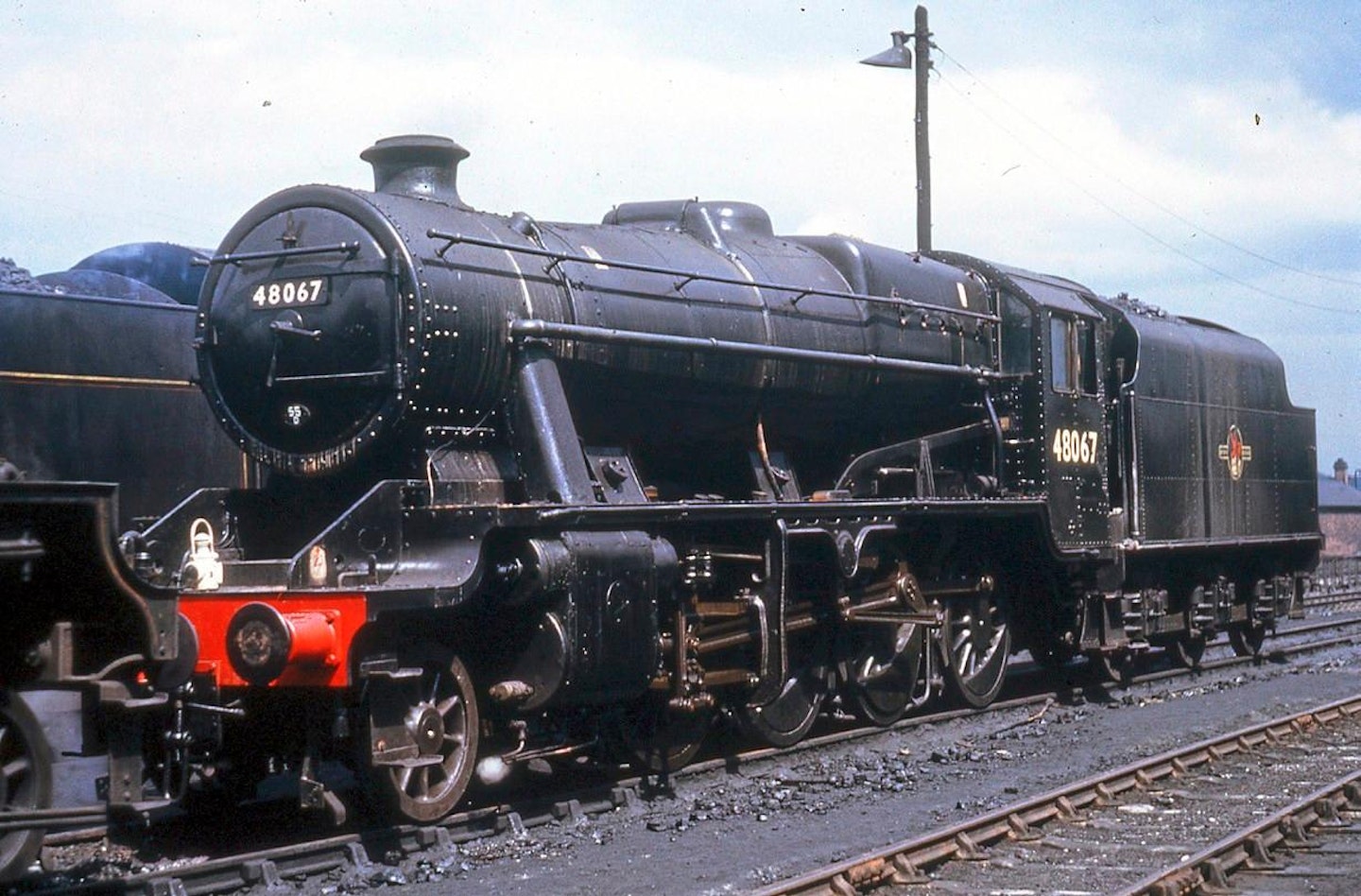
The first 12 engines had vertical throatplate fireboxes with the regulator mounted in the smokebox, so were devoid of a dome. From No. 8012 onwards, the throatplate sloped into a short combustion chamber, thereby shortening the tube length, and a dome containing the regulator was provided. No. 8003’s frames were modified to accept this later boiler, thereby releasing a spare boiler for its 11 compatriots. Nos. 8000-8005 were built without vacuum equipment but all others had it from new, the first six soon gaining it also.
The need for heavy goods engines was felt most strongly on the Midland Division and it was there that the class, in its early days, was mostly destined. Exceptions were Nos. 8002-05 and 800911 which went to Willesden, while Nos. 8006-08 were allocated to Crewe. All had been reallocated to Midland sheds within a couple of years. It was 1939 after the initial needs had been satiated that permanent allocations to the Western Division were made. None were at this time sent to the Central Division (former L&YR) or Scotland.
The Stanier engines were intended for similar work as the ‘Austin 7s’ on heavy mineral traffic but their versatility on fast fitteds, empty coaching stock and similar was soon discovered, causing their power rating to increase to ‘8F’ and vacuum fittings added to Nos. 8000-05. Goods and mineral work is largely ignored in the railway press but the ‘8Fs’ were soon doing the bulk of Midland traffic outside that needing the Garratts and, as their numbers increased, some could be spared for Willesden and Crewe sheds, and allowed the ‘Austin 7s’ to be transferred to lighter duties, kinder to their frailties, at ex-L&YR sheds. The Vulcan batch was completed in November 1937 but Crewe was lagging; no new ‘8Fs’ appeared in 1938 but restarted with No. 8096 in January 1939.
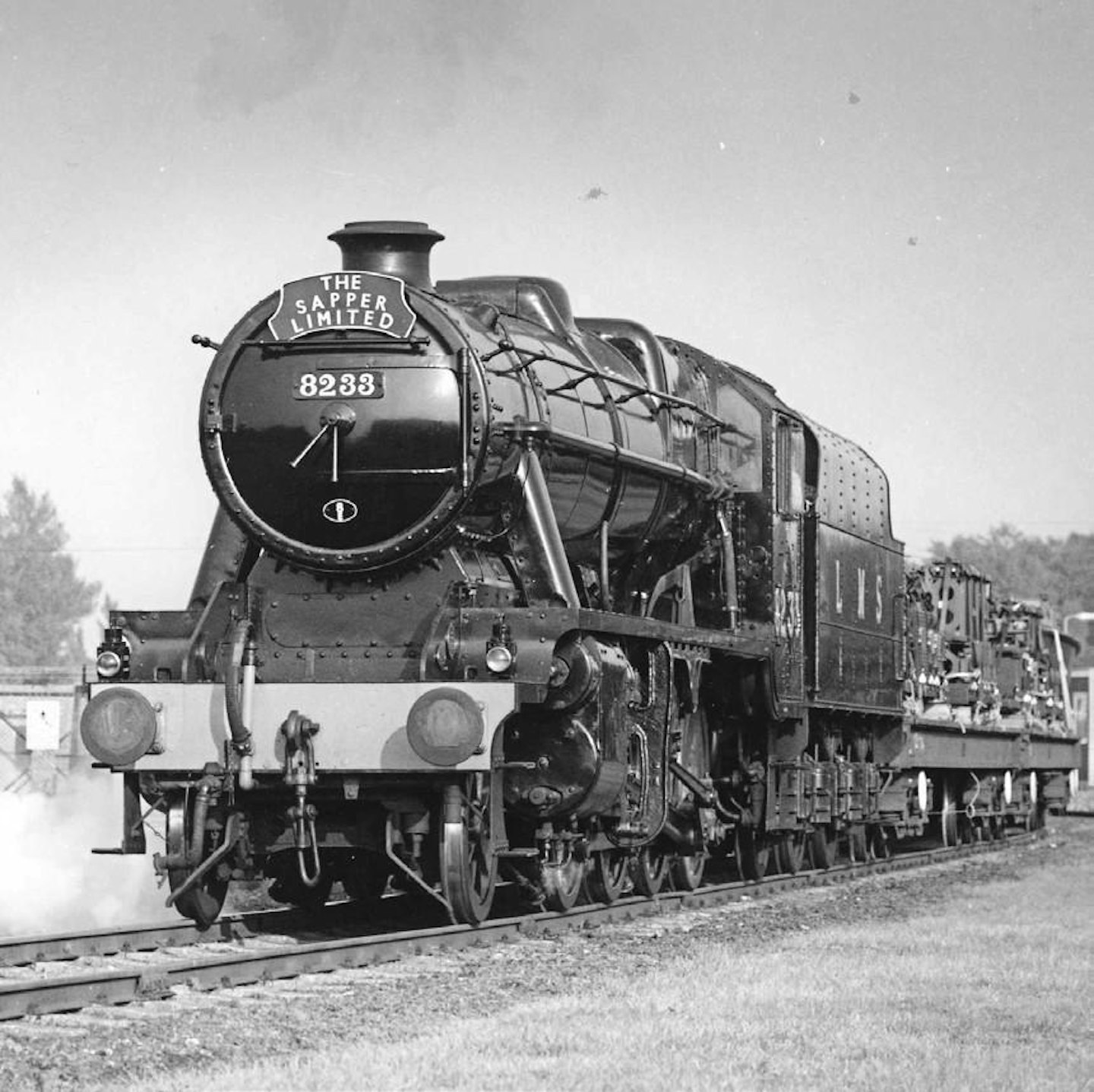
Wartime builds
No. 8125 was built on June 22 1939 and for 1940 a further five were authorised on June 28 1939; they were postponed to the November 23 1939 meeting, now in wartime, and a further 95 ‘8Fs’ added (Nos. 8126-8225), these 95 ordered from North British. Delivery was very protracted and was in any case absorbed within the orders from the War Department, which in December that year had chosen the ‘8F’ as its standard type as the most modern 2-8-0 available and with a wide route availability and proven reliability record. That a senior LMS man, Robert Riddles, was the WD’s Director of Transport Equipment might also have played a part. They were intended for use in Europe but the fall of France in 1940 ensured that none were sent there; instead those built by North British (WD300-337) and Beyer, Peacock (WD400-420) were loaned to the LMS and GWR until requisitioned back to the WD and sent abroad in 1941, this time further afield to the Middle East. Few modifications had been made to these engines to suit them to either France or the Middle East: frames became mild steel instead of high tensile but increased in thickness by 1/16th inch to 11/16in; connecting rods shortened and piston rods lengthened by 5in to avoid the need to split the crosshead taper during piston and valve examinations and, usually, there was the provision of Westinghouse air brake equipment. Later engines for the Middle East were fitted for oil firing and had an additional stop valve inserted ahead of the clack valves so this could be shut down should it stick open due to the atrocious quality of the water. A further batch was sent in place of an existing order for a different type of engine to Turkey, the main change being to right-hand drive.
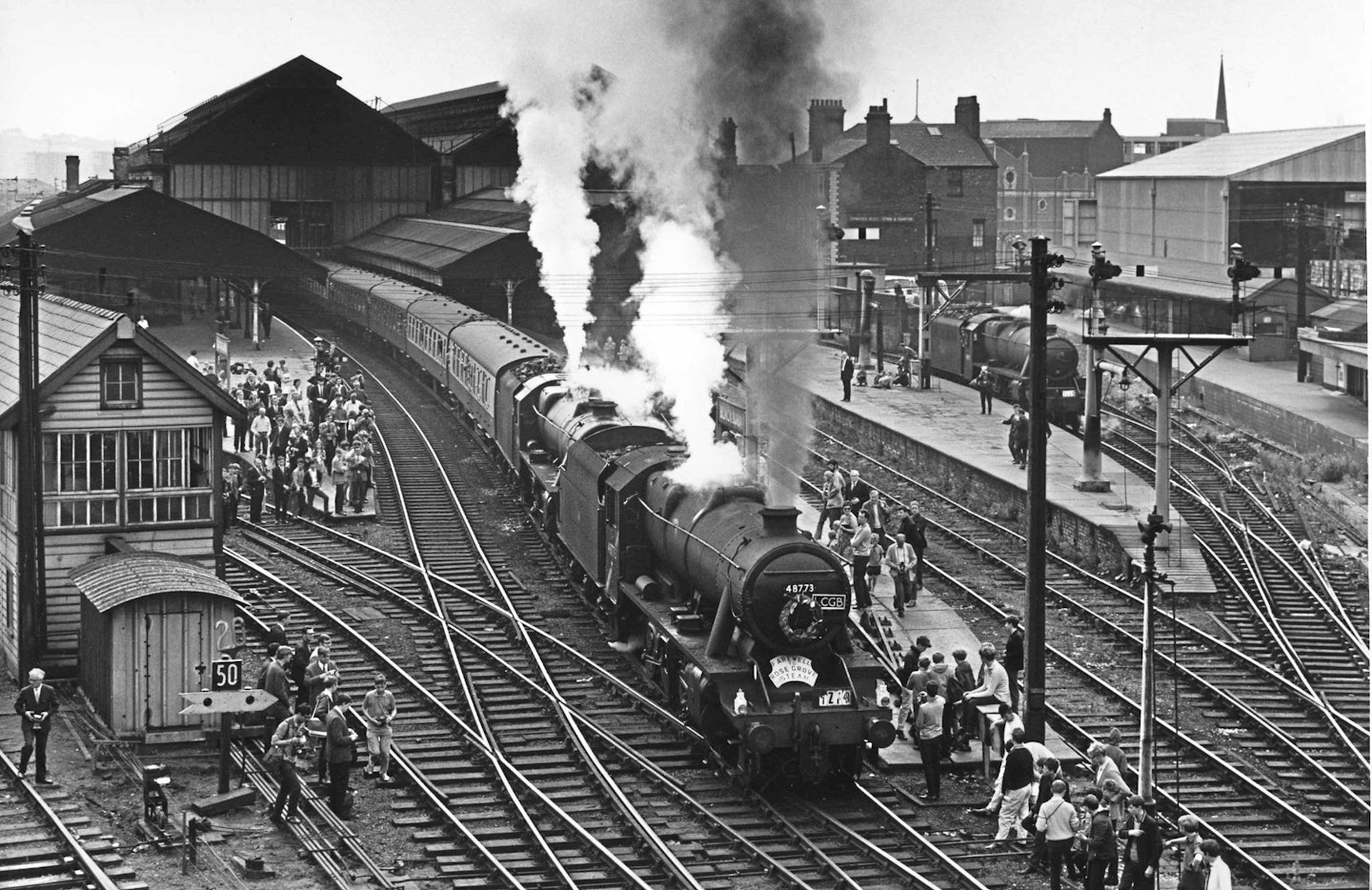
The need for new engines was such that all four railways took part in the building programme, the LMS of course at Crewe and Horwich; the LNER at Doncaster and Darlington; the GWR at Swindon, and the Southern at Eastleigh, Ashford and Brighton (some of these built for LNER orders). Additionally, Vulcan Foundry, Beyer, Peacock and North British of the private builders received and fulfilled orders so the total number of ‘8Fs’ built was eventually 852. The last was Darlington-built No. 8752 delivered on October 2 1946 as LNER ‘O6’ No. 3147, then No. 8752 after transfer to the LMS on December 10 1947.
In Britain, the class had worked on the GWR and LNER, the LNER having ordered some new ones for its own specific use. Post-war, these engines were all transferred to LMS or BR (LMR) stock. Additionally, WD engines still in the Middle East had been withdrawn in poor condition and, given the locomotive shortage at home, Ron Jarvis was dispatched in September 1947 initially to Palestine and 199 Railway Workshop then on to 169 Railway Workshop Company, RE, at Suez to view what was available to see if any were worth bringing back for overhaul and eventual return to traffic. Thirty-nine were selected along with four spare tenders; they arrived home in April and May 1948.
In 1952, there was a shortage of engines in the Middle East with many out of traffic with defects needing the attention of a full works repair. Five of these, but without tenders, were returned to Derby for full overhaul, but while there the political situation in Egypt deteriorated, leading to the 1956 Suez Crisis, and they were never to return to the desert sun. The protracted overhauls were completed and the engines moved to the Longmoor Military Railway, where they were surplus to requirements and little used. Three were offered to British Railways, which had a shortage of heavy goods engines, and they were numbered 48773-75 and allocated to Polmadie from September 7 1957, making 666 ‘8Fs’ in BR service. The other two stayed with the army at its base at Cairnryan.
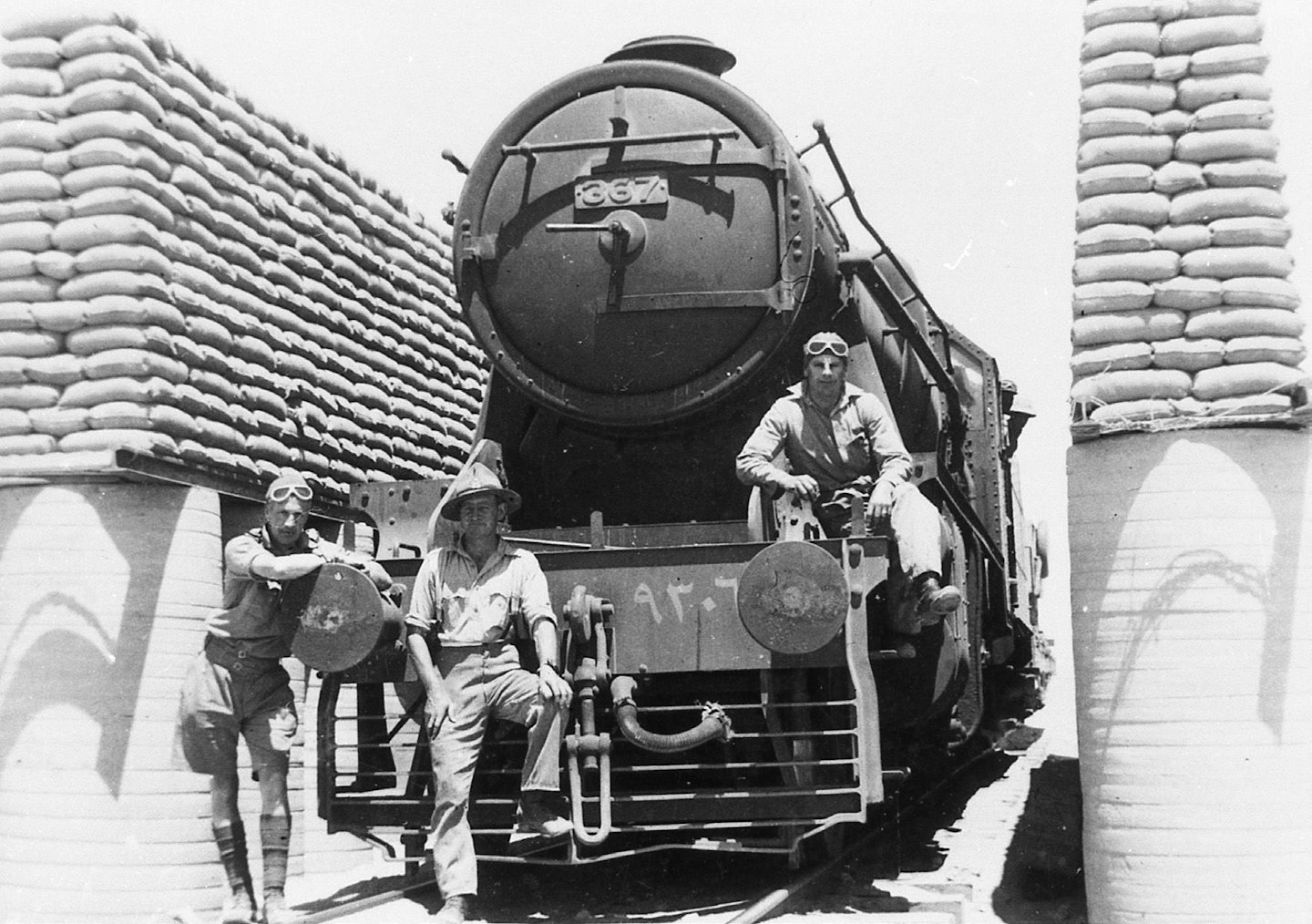
British service
From 1948, the class again settled into the unexciting routine of running heavy mineral and mixed goods trains. Although such traffic attracted little press or enthusiast attention, it required good engines and more footplate skills than running an express passenger train and these trains were run daily throughout the country. Few achieved any fame, but among those that did were the ‘Long Megs’ from the northern part of the ‘Settle and Carlisle’ line to Widnes, and the ICI hoppers over the Derbyshire peaks to Northwich, 1,000-ton trains over severe gradients. Both these trains were a normal part of ‘8F’ duties.

But above these, their lives were enlivened by faster traffic, such as fast fitted freights, empty coaching stock, local passenger work and even Saturday excursions. They had a decent turn of speed and some received 40% reciprocating balance allowing them to run (officially) at 50mph, a speed they could easily and often did exceed. They generally stayed on the Western and Midland Divisions but also eventually explored Scotland and made some inroads into L&YR territory, although these were largely strongholds of the Riddles ‘Austerity’ 2-8-0s and, in Scotland, 2-10-0s.
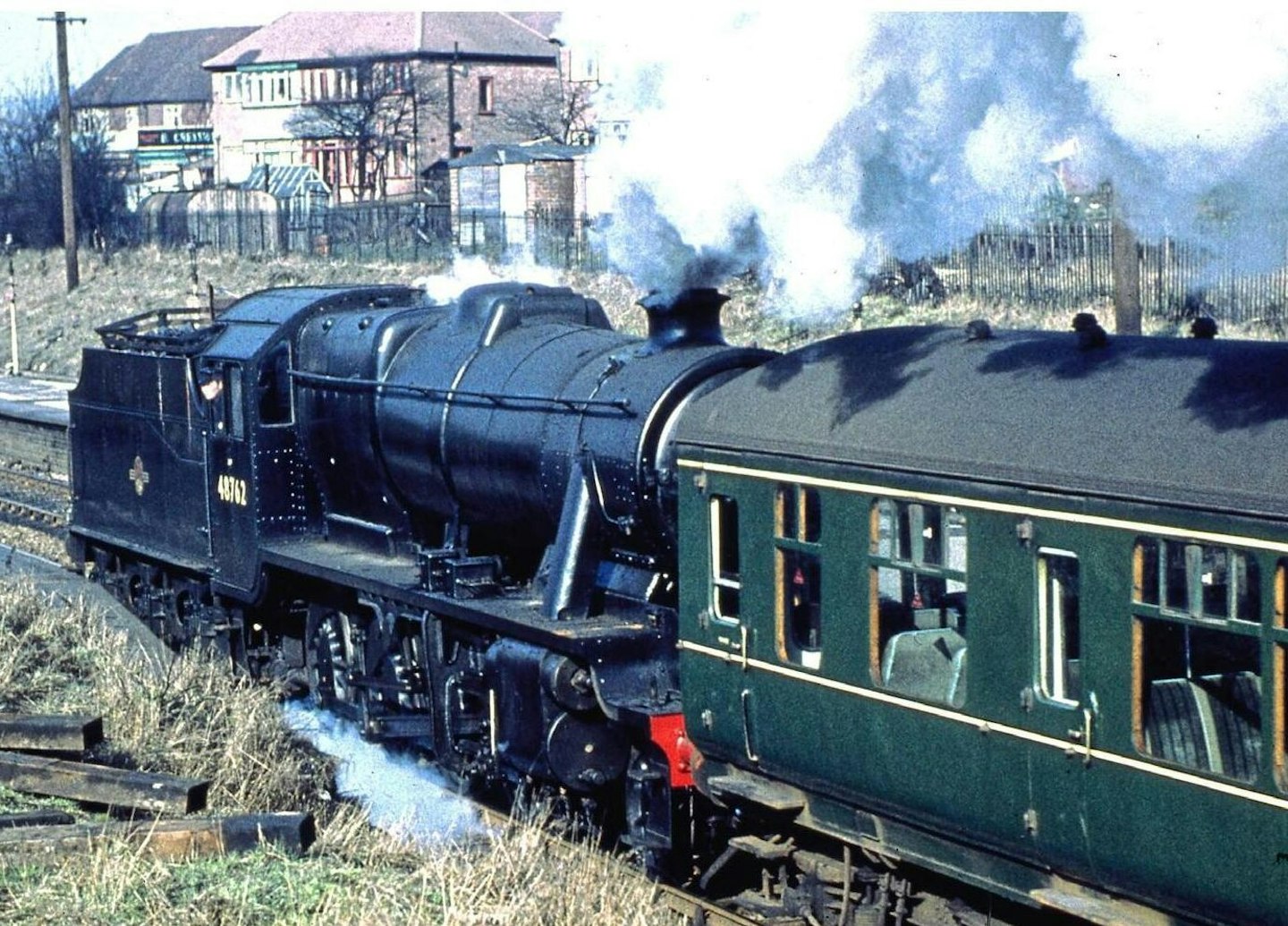
The ‘8Fs’ were well used and there was much hand-wringing when No. 48616 was written off after a severe collision at Turvey on June 17 1960. Such was the need for these engines that the next withdrawal was two and a half years later on December 22 1962, when No. 8009 succumbed. The three Scottish engines, Nos. 48773-75, were also withdrawn about the same time but snapped up by the London Midland Region and reinstated. There were no more withdrawals until 1964 (26), 95 went in 1965 and a further 162 in 1966. A further 231 went in 1967 and no fewer than 150 were still in traffic at the start of that final year of BR steam, 1968.
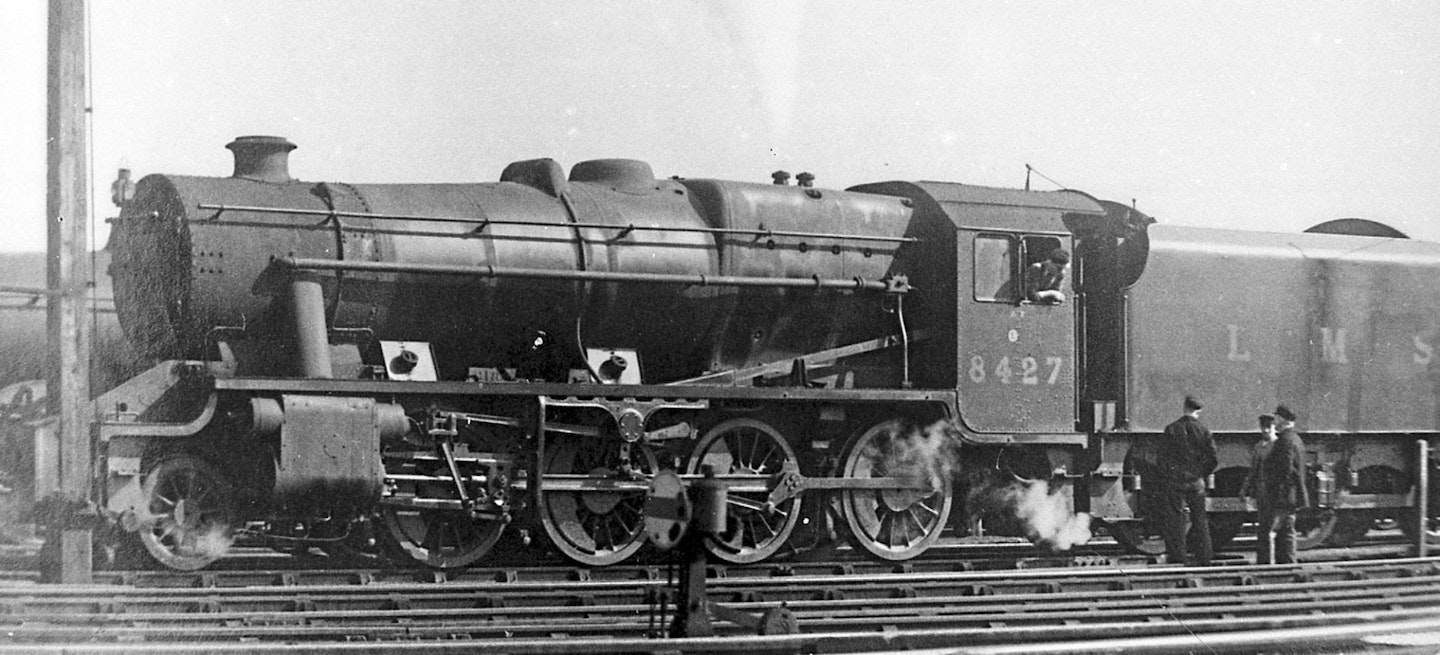
Conclusion
The ‘8Fs’ arrived late to fill the LMS’s needs in the heavy goods and mineral trains area but then did more than anyone expected, proving fast enough to work faster traffic also. Many sheds used them on fast fitted diagrams alongside ‘Crabs’, ‘Black Fives’, ‘Jubilees’ and ‘Baby Scots’. They served in large numbers up to the very end of BR steam. They were strong, free steaming and, usually, good riding; their less desirable attributes were that they were heavy on water consumption due to the relatively medium degree superheat, and could also be light on their feet and slip if provoked. But they were popular with crews and fitters alike and could be entrusted with anything given to them, even deputising for a failed express passenger engine on occasion.

Preservation
The number of ‘8Fs’ preserved is open to debate as there are several preserved examples abroad in Turkey, Israel and Iraq, plus others still extant but derelict. Of the two ex-Turkey examples, No. 45160 (running as No. 8274) is right-hand drive and currently in store at a private site. It was built by North British as WD 348 and allocated the LMS number but never carried it. It was later exported to Turkey as a kit of parts. The other ex-Turkish example is No. 45170, under restoration at the Bo’ness & Kinneil Railway.
Ex-British Railways examples are No. 48151 (under overhaul at Carnforth, having been a consistent main line performer); No. 48173 (under restoration at the Churnet Valley Railway); No. 48305 (operational at the Great Central Railway); No. 48431 (on static display at the Keighley & Worth Valley Railway); and No. 48624 (under overhaul at the GCR). Additionally, No. 48518 was rescued from Barry scrapyard but used as a parts donor for a new-build GWR ‘County’ 4-6-0. It was consequently dismantled and the frames cut up in mid-2013.
The other preserved example is one of particular interest to this writer. It is one of the three ex-Longmoor engines, variously WD 307, LMS 8233, Iranian State Railways 41-109, WD 70307, WD 500 and BR 48773, which had seen service in the Middle East, where it suffered the indignity of being derailed by a camel. Following its work on BR where it worked up to the final day of normal traffic, August 4 1968, it was purchased directly from BR that month and moved to the Severn Valley Railway. Currently displayed at Highley with footplate access at many SVR special events, it has covered 147,000 miles in preservation on the SVR, other heritage lines and out on the main line. Due to its war service in Persia (Iran) and Egypt the engine has become a war memorial and carries plaques recording its dedication at Highley on September 27 1986 to the memory of all British military railwaymen who gave their lives on active service in the Second World War.
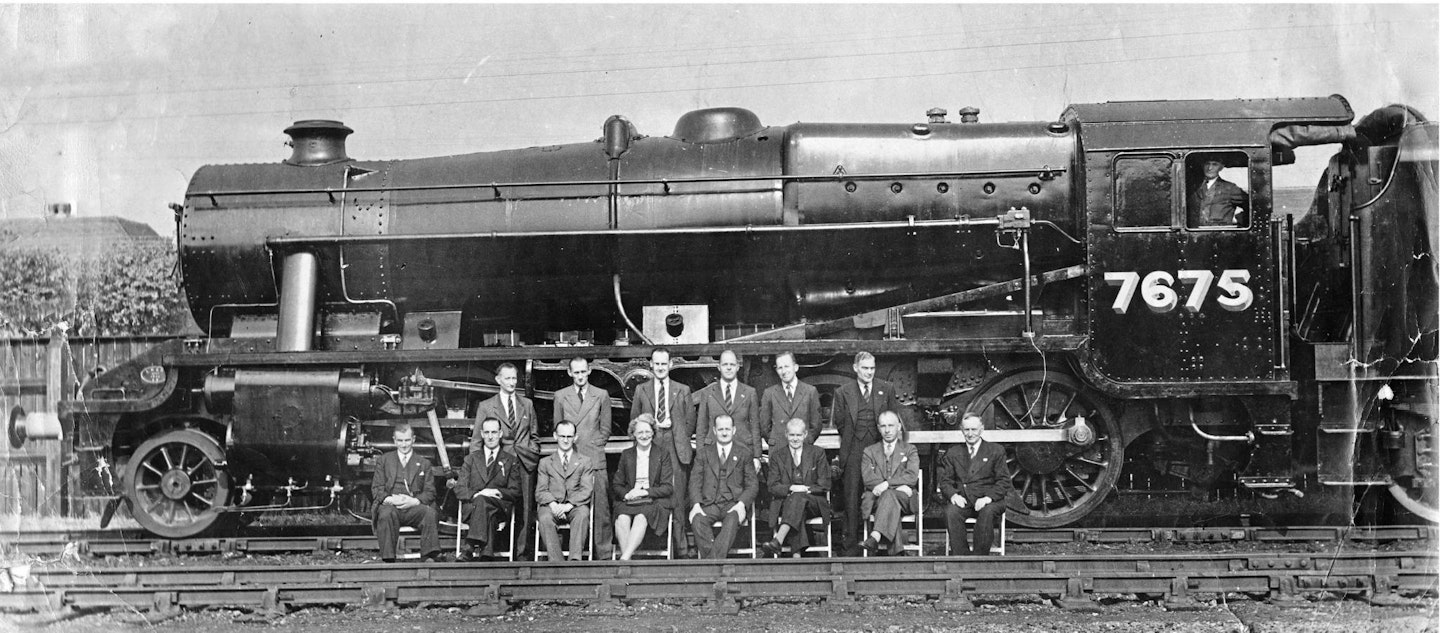
**
INFORMATION**
The owners, the Stanier 8F Locomotive Society Ltd, are working to raise the funds needed to restore the engine to working order. Visit the website: www.8fsociety.co.uk
Each issue of Steam Railway delivers a wealth of information that spans the past, present and future of our beloved railways. Featuring stunning photography, exclusive stories and expert analysis, Steam Railway is a collector's item for every railway enthusiast.
Choose the right subscription for you and get instant digital access to the latest issue.

